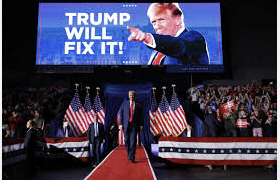It’s affecting the industry in more ways than you’d initially think
Cannatech Today has the lowdown
The cannabis industry is no stranger to regulatory hurdles, but now it faces a new economic roadblock: tariffs. In a move aimed at tackling illegal immigration and drug trafficking, President Donald J. Trump has imposed a 25% tariff on imports from Canada and Mexico and a 10% tariff on goods from China as of February 1, 2025. While these measures are intended to address national security and the opioid crisis, the collateral damage is poised to hit American cannabis businesses hard.
Many of the industry’s essential components—vaporizer hardware, packaging, cultivation equipment—are sourced from overseas, particularly China. With prices on the rise, cannabis companies are scrambling for solutions. The question now is: who will absorb the costs—businesses or consumers? And could this fuel a resurgence of the illicit market?
Vape Crisis 2.0? Why Hardware Costs Are Skyrocketing
Vaporizer hardware is one of the largest product categories affected by the new tariffs. The majority of vape cartridges, batteries, and disposable devices are manufactured in China, a country now facing a 10% tariff increase on exports to the U.S.
Many cannabis brands were already battling rising costs due to inflation and previous supply chain disruptions. With tariffs in play, companies must either absorb the increased costs, pass them to consumers, or seek alternative manufacturing in countries like Malaysia or India—an option that could take years to fully implement.
Higher retail prices for vape products could push some consumers toward cheaper, unregulated black-market options, raising concerns about product safety—a chilling reminder of the 2019 EVALI crisis linked to illicit vape cartridges.
The Packaging Predicament: No Easy Substitutes
Cannabis packaging is another industry segment taking a hit. Many companies source their child-resistant containers, pre-roll tubes, and custom branding materials from Chinese manufacturers.
Shifting production to the U.S. or other countries isn’t as simple as it sounds—domestic options are often more expensive, have limited production capacity, or lack the specialized designs required for compliance.
One possible upside? The tariff hike may accelerate a shift toward sustainable, locally sourced packaging solutions. Companies that innovate in this space could gain a competitive edge while reducing reliance on volatile international trade conditions. Green Market Report has detailed how these shifts are affecting businesses.
Cultivation Costs Are Set to Soar
Indoor and greenhouse cultivators rely on sophisticated lighting systems, irrigation technology, and climate control equipment—much of which comes from China. Tariffs will increase operational costs, forcing businesses to rethink expansion plans or invest in higher-priced domestic alternatives.
A 2024 analysis from MJBizDaily warned that additional tariffs on key cultivation equipment could impact profit margins, particularly for small and mid-sized growers who already face stiff competition from larger multi-state operators.
Read the full report

















